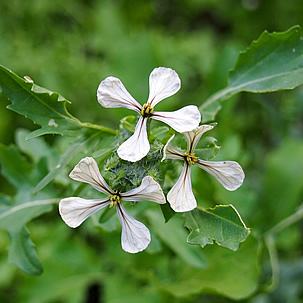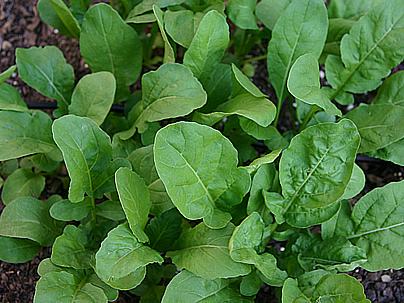Arugula (Eruca vesicaria) is an annual herbaceous plant, native to the Mediterranean regions of Europe and East Asia. With its rich pungent flavor, it has become popular worldwide, mainly through Italian cuisine, which values it in various preparations. It is sometimes confused with the perennial species Diplotaxis tenuifolia, with yellow flowers, also known as wild rocket.

Arugula has dark green leaves arranged in a rosette, pinnate with 4 to 10 deep lateral lobes and a large terminal lobe. They are tender when young, becoming firmer and more fibrous over time. The flowers appear in corymbs, typical inflorescences of the Brassicaceae family, white with lilac veins, tetramerous. The following fruits are siliques, thin pods with edible seeds. The most cultivated arugula varieties are “Astro”, “Antonella”, “Arugula coltivata”, “Donatella”, “LG Maia”, “Giovana” and “Roquette”

Nutritious and tasty, arugula is an essential in home gardens. Its cultivation is straightforward and requires no special care, allowing planting throughout the year. It is rich in vitamins A, C, and minerals, and can be consumed raw or sautéed in salads, sandwiches, pasta sauces, pizzas, soups, and pairs excellently with tomatoes, cheeses, oregano, olive oil, meats, fish, other greens, and fresh mushrooms.
More recently, its use in detox juices has become popular, combined with other ingredients like watercress, ginger, and lemon, aiding in health maintenance. It also has medicinal qualities, see the table below.
It should be grown in full sun, in fertile, drainable soil, enriched with organic matter, and irrigated regularly. It thrives in mild climates, can be planted year-round in the south and southeast regions, avoiding the hottest months in the northeast, north, and central-west. The arugula is sensitive to excessive moisture and heat, it can succumb to fungal and bacterial attacks. The main pests are caterpillars and nematodes.
The arugula propagation is through seeds, sown directly in the final location, at a depth of 0.5 cm and spaced 20 cm between rows. Germination occurs in 4 days and thinning should be done when plants reach 10 cm, leaving about 15 cm between the remaining plants. Use the thinned plants to prepare delicious “baby leaf” salads with small, tender leaves. Harvesting is between 40 to 65 days, depending on the variety and season. The plant can be pulled out entirely, or cut near the base to encourage regrowth. It fruits about 110 days after planting. After seeding, it gradually weakens and loses vigor.


